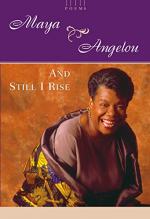
|
| Name: _________________________ | Period: ___________________ |
This test consists of 15 multiple choice questions and 5 short answer questions.
Multiple Choice Questions
1. Where does the speaker say she obtained her gifts?
(a) From her ancestors.
(b) From well-chosen friends.
(c) From the passage of time.
(d) From effort and hard work.
2. In the fourth stanza, what kind of person does the speaker ask if "you" want her to be?
(a) Sad and meek.
(b) Angry and afraid.
(c) Tired and distracted.
(d) Distant and uninvolved.
3. In the final quatrain, what does the speaker wonder about upsetting "you" with?
(a) Intelligence.
(b) Beauty.
(c) Sexiness.
(d) Kindness.
4. What words create a refrain in the final two stanzas of the poem?
(a) "Still I rise."
(b) "I rise and rise."
(c) "Again I rise."
(d) "I rise."
5. How does the speaker characterize herself in line 4?
(a) Brave and perseverent.
(b) Intelligent and curious.
(c) Lively and confident.
(d) Lighthearted and silly.
6. What techniques are used in line 19, "’Cause I laugh like I've got gold mines"?
(a) Onomatopoeia and alliteration.
(b) Alliteration and assonance.
(c) Assonance and sibilance.
(d) Sibilance and onomatopoeia.
7. What is the rhyme scheme of the first seven stanzas?
(a) ABCB.
(b) ABBA.
(c) ABAB.
(d) ABAC.
8. What technique is used in lines 7 and 8, "’Cause I walk like I've got oil wells/ Pumping in my living room"?
(a) Metaphor.
(b) Personification.
(c) Simile.
(d) Juxtaposition.
9. What technique is used in line 29, "Out of the huts of history’s shame"?
(a) Allegory.
(b) Oxymoron.
(c) Allusion.
(d) Juxtaposition.
10. Which is the first stanza of the poem that is longer than four lines?
(a) 8.
(b) 9.
(c) 6.
(d) 7.
11. What is the primary quality that the speaker's stanza eight description of a body of water is intended to convey?
(a) Persistence.
(b) Independence.
(c) Power.
(d) Endurance.
12. Which technique is frequently used at the beginnings of stanzas?
(a) Cacophony.
(b) Onomatopoeia.
(c) Internal rhyme.
(d) Rhetorical question.
13. Which is the best definition for "trod" in the context of line 3?
(a) The sound of footsteps.
(b) Throw or hurl downward.
(c) Drag along the floor or earth.
(d) Press down with the foot.
14. What body of water does the speaker claim to be in the eighth stanza?
(a) A river.
(b) A lake.
(c) A stream.
(d) An ocean.
15. Which two things does the final stanza use to represent the past and present?
(a) The directions east and west.
(b) A seed and a sprout.
(c) Night and daybreak.
(d) Gathering clouds and rain.
Short Answer Questions
1. What technique is used in line 21, "You may shoot me with your words"?
2. What technique does the first line of the poem, "You may write me down in history," introduce?
3. Which technique is used in line 9, "Just like moons and like suns"?
4. Who is the author of "Still I Rise"?
5. Which is the best definition of "beset" in line 6?
|
This section contains 421 words (approx. 2 pages at 300 words per page) |

|




